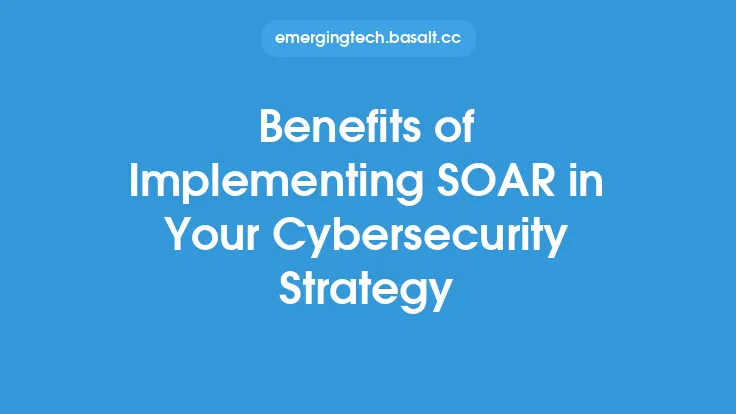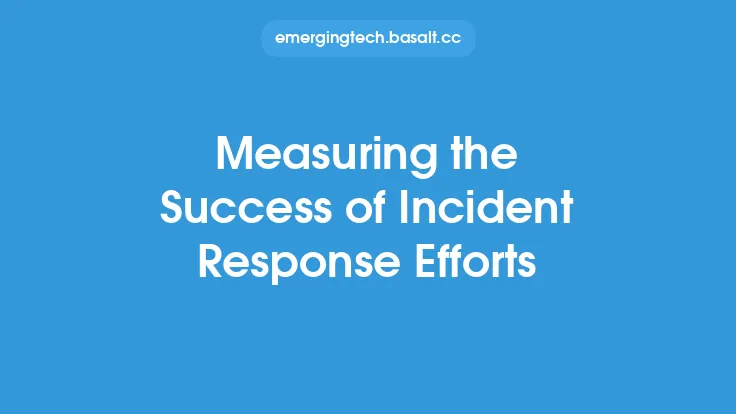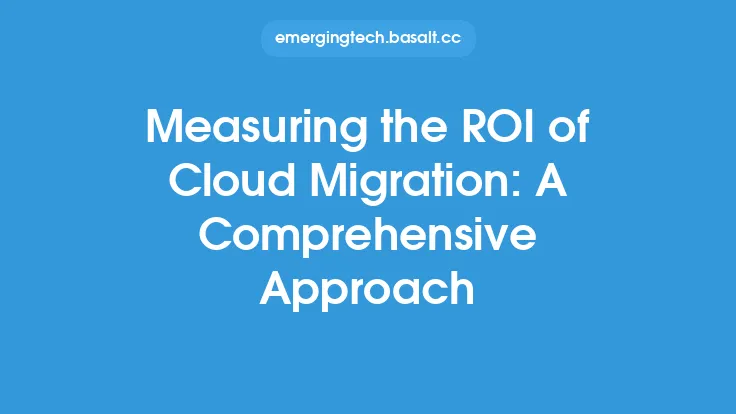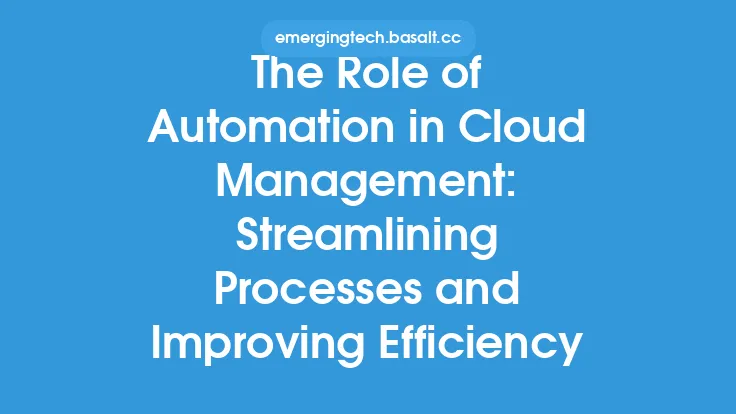Implementing a Security Orchestration Automation and Response (SOAR) solution is a significant step for any organization looking to enhance its cybersecurity posture. However, the effectiveness of SOAR can vary greatly depending on several factors, including the specific needs of the organization, the complexity of its security environment, and the level of integration with existing security tools and processes. To truly understand the impact of SOAR on an organization's cybersecurity, it's essential to measure its effectiveness.
Key Performance Indicators (KPIs) for SOAR Effectiveness
Measuring the effectiveness of SOAR involves tracking a set of Key Performance Indicators (KPIs) that reflect the solution's impact on the organization's security operations. These KPIs can be broadly categorized into three areas: incident response, threat hunting, and security operations. Some of the most critical KPIs for SOAR effectiveness include:
- Mean Time to Detect (MTTD): The average time it takes for the organization to detect a security incident.
- Mean Time to Respond (MTTR): The average time it takes for the organization to respond to a security incident.
- Incident Resolution Rate: The percentage of security incidents resolved within a specified timeframe.
- False Positive Rate: The percentage of false positive alerts generated by the SOAR solution.
- Automation Rate: The percentage of security incidents automated by the SOAR solution.
- Return on Investment (ROI): The financial return on investment in the SOAR solution, calculated by comparing the costs saved or avoided to the costs of implementing and maintaining the solution.
Metrics for Evaluating SOAR Effectiveness
In addition to KPIs, there are several metrics that can be used to evaluate the effectiveness of a SOAR solution. These metrics can provide a more detailed understanding of the solution's performance and identify areas for improvement. Some of the key metrics for evaluating SOAR effectiveness include:
- Incident Volume: The total number of security incidents handled by the SOAR solution.
- Incident Severity: The severity of security incidents handled by the SOAR solution, typically measured on a scale of low to critical.
- Response Time Distribution: The distribution of response times for security incidents, which can help identify bottlenecks in the incident response process.
- Automation Coverage: The percentage of security incidents that are fully automated by the SOAR solution.
- Integration Coverage: The percentage of security tools and systems integrated with the SOAR solution.
Methodologies for Measuring SOAR Effectiveness
There are several methodologies that can be used to measure the effectiveness of a SOAR solution. These methodologies can be broadly categorized into two areas: quantitative and qualitative. Quantitative methodologies involve collecting and analyzing numerical data, such as KPIs and metrics, to evaluate the solution's performance. Qualitative methodologies involve collecting and analyzing non-numerical data, such as user feedback and satisfaction surveys, to evaluate the solution's impact on the organization's security operations. Some of the most common methodologies for measuring SOAR effectiveness include:
- Benchmarking: Comparing the performance of the SOAR solution to industry benchmarks or best practices.
- Baseline Analysis: Comparing the performance of the SOAR solution to a baseline measurement, typically taken before the solution was implemented.
- Root Cause Analysis: Identifying the underlying causes of security incidents and evaluating the effectiveness of the SOAR solution in preventing or responding to these incidents.
Challenges in Measuring SOAR Effectiveness
Measuring the effectiveness of a SOAR solution can be challenging due to several factors, including:
- Complexity of Security Environment: The complexity of the organization's security environment, including the number and variety of security tools and systems, can make it difficult to measure the effectiveness of the SOAR solution.
- Limited Visibility: Limited visibility into security incidents and response activities can make it difficult to collect accurate and comprehensive data.
- Evolving Threat Landscape: The constantly evolving threat landscape can make it challenging to develop effective metrics and KPIs for measuring SOAR effectiveness.
- Integration Challenges: Integrating the SOAR solution with existing security tools and systems can be challenging, which can impact the solution's effectiveness.
Best Practices for Measuring SOAR Effectiveness
To overcome the challenges in measuring SOAR effectiveness, it's essential to follow best practices, including:
- Establish Clear Goals and Objectives: Establishing clear goals and objectives for the SOAR solution can help ensure that metrics and KPIs are aligned with the organization's security strategy.
- Develop a Comprehensive Metrics Framework: Developing a comprehensive metrics framework can help ensure that all aspects of the SOAR solution's performance are measured and evaluated.
- Implement Automated Data Collection: Implementing automated data collection can help ensure that data is accurate, comprehensive, and up-to-date.
- Conduct Regular Review and Analysis: Conducting regular review and analysis of metrics and KPIs can help identify areas for improvement and optimize the SOAR solution's performance.
Conclusion
Measuring the effectiveness of a SOAR solution is critical to ensuring that it is meeting the organization's security needs and providing a strong return on investment. By tracking key performance indicators, metrics, and using various methodologies, organizations can gain a comprehensive understanding of their SOAR solution's performance and identify areas for improvement. However, measuring SOAR effectiveness can be challenging due to the complexity of the security environment, limited visibility, and evolving threat landscape. By following best practices, organizations can overcome these challenges and ensure that their SOAR solution is optimized for maximum effectiveness.





